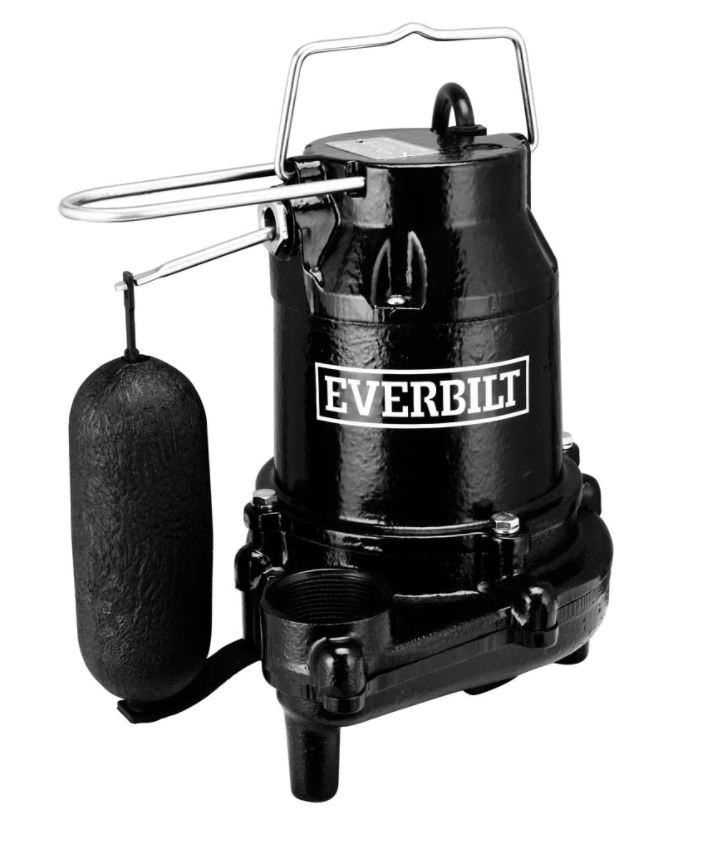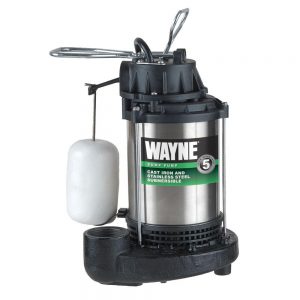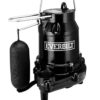
If you have a drainage tile system in your basement and are considering a sump pump upgrade, here are the things you need to know.
A sump pump in a hole will not prevent water from flooding into your basement during heavy rains or snow melt, but a full-perimeter drainage tile system with a sump pump can usually do the trick if installed properly. If your sump pump fails, the system will not work. If the system doesn’t work, it can result in hundreds or even thousands of gallons of water in your basement – not a good situation!
*5 DECISIONS TO MAKE WHEN PURCHASING A SUMP PUMP*
- What type of pump (submersible or pedestal)
- Alarms/sirens
- Pumping capacity
- Secondary system or backup pump
- Manufacturer warranty
Types of sump pumps
There are two types of sump pumps traditionally used in residential applications: submersible in water and non-submersible (also called pedestal pumps).
A pedestal pump sits above the basin and is easy to inspect because you don’t have to take off a cover and put your hand in the water. A drawback is that the motor is exposed and can be easily damaged or knocked into. Another positive is that the impeller (that draws the water out) on a pedestal system doesn’t take up much room, thus can be installed in a smaller basin. One final note to consider is these pumps are not as efficient as submersible pumps and do take longer to pump water out – making them less reliable in instances of heavy flooding.

Submersible pumps are a bit different and tend to run quieter as they are submerged in water with a lid on top that is typically sealed. The lid should be sealed to keep bugs, and earth gasses from entering the basement. Because the pump is protected in a closed compartment, there is less of a chance it gets accidentally damaged. There are more submersible pump options on the market as they are more popular and can usually offer more pumping capacity. With all this considered, you should also understand submersible pumps are more expensive than pedestal pumps.

Alarms/Sirens
Without an alarm or siren on your sump pump, you will likely not know when it fails. Consider installing an audible or visual (or both) alarm on your sump pump system. There are several options and many newer sump pumps even have wi-fi options that can notify you remotely on a smartphone or computer if your pump has failed.
Pumping capaticy
Gallons per minute (GPM) is the most effective way to measure the performance of your pump. Some 1/3 horsepower pumps, for example, pump 20 GPM and others pump 50 GPM – both when measured at a vertical height of 10 feet. To determine your needs, you should calculate how much water is entering your sump pump basin per minute. With that said, the vast majority of pumps on the market are either 1/3 or 1/2 horsepower. Consider hiring a basement water management specialist for a professional opinion on what the right size pump would fit the needs of your basement.
Secondary pump/backup
Having a backup is a nice insurance policy for if your primary fails or loses power. True redundancy means a second pump with a power source (battery backup), switch, and its own discharge pipe. It is also wise to have a notification system in place should any of the backup features activate due to primary pump failure, power outage, a frozen or damaged pipe or even a capacity shortfall on the initial pump in a major flooding event.
When considering a backup system, be sure the pumping capacity is adequate. If your primary pump has a 40 GPM capacity, your backup pump should be capable of a similar capacity.
Warranty
For the most part, all sump pumps come with a 2, 3 or even 5 year manufacturer warranty. Longer warranties normally accompany the better products and are typically more expensive. Some companies warrant pumps from the date of manufacturing and some from the date of purchase. Others from the date of install. Some manufacturers ask to have the pumps returned and inspected before the warranty is honored. Other companies back the installers to make those decisions on the spot. To get a labor warranty, you will typically need to hire a contractor who works directly with the manufacturer. Hiring a basement water management specialist can almost always save you future headaches.
Check out this great resource from our friends at This Old House about all things sump pumps:
https://www.thisoldhouse.com/basements/21097137/how-to-install-a-sump-pump


